MEMORY AND DIASPORA IN WIDLINE CADET
Widline Cadet (Pétion-Ville, Haiti, 1992) brings together in her life experience several of the aspects and themes that, perhaps, have inspired more production among all those curatorial lines with more presence. Her biography, constructed through childhood memories, the environment of a generation and a country marked by its own strong culture or the phenomena of emigration, constitutes the framework in which the photographer develops the practical integrity of her work.
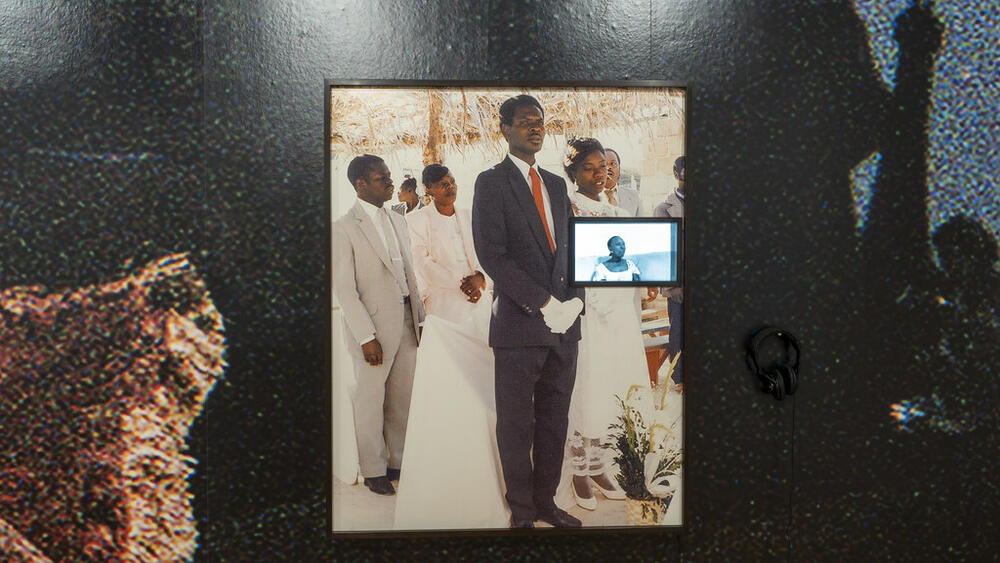
Her artistic production invites us to reflect on all these processes and their fragility and volatility over time, while also exploring the sense of the relativity of memory and the courses of attachment and detachment from place and belonging. Cadet maintains a homogeneous discourse, built from those parts that form the same whole, indicating the importance of family ties and relationships that become real photographs of his family and friends, to the criticality of space, that same terrain where identities are forged and, above all, personalities are built.
In Take this with you / Pran sa avèk ou the photographer works precisely with all these elements, but also with the spatial interaction of the exhibition, going far beyond mere photography and taking it to three-dimensional elements and mixed techniques that coexist and develop in dialogue with the corners reproduced through this memory.
It could be a single memory articulated and expressed in multiple works, those that physically capture everything that makes up the memory and its history, the same ones that she remembers as an adult after emigrating to the United States and that conforms, with the distance in between, a personal and transformed memory of a reality placated by time and by the processes of assimilation and custom.
Take this with you / Pran sa avèk ou, by Widline Cadet, can be visited until September 7 at Casa de América, Plaza de Cibeles, s/n, Madrid, Spain.
Related Topics
May interest you
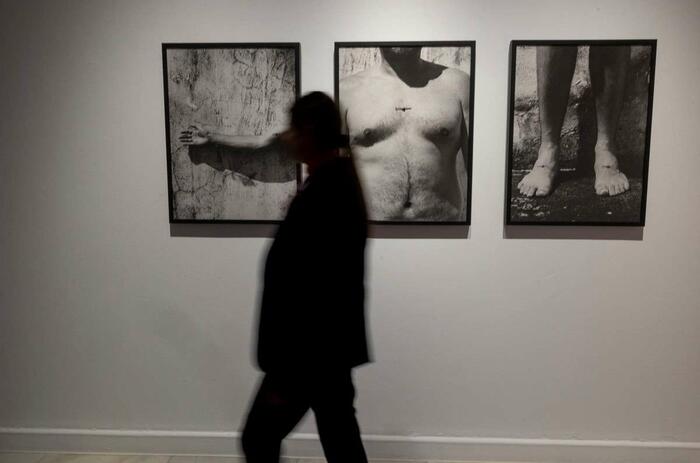
Concrete Wounds/Herida concreta is the exhibition that the Canary Islands' Centro Atlántico de Arte Moderno (CAAM) is dedicating to Karlo Andrei Ibarra (San Juan, Puerto Rico, 1982), one of the most promising and internationally renowned names of the Puerto Rican art scene.
THE POLITICAL AND SOCIAL MEANINGS OF KARLO ANDREI IBARRA AT CAAM
Concrete Wounds/Herida concreta is the exhibition that the Canary Islands' Centro Atlántico de Arte Moderno (CAAM) is dedicating to Karlo Andrei Ibarra (San Juan, Puerto Rico, 1982), one of the most promising and internationally renowned names of the Puerto Rican art scene.

Concrete Wounds/Herida concreta is the exhibition that the Canary Islands' Centro Atlántico de Arte Moderno (CAAM) is dedicating to Karlo Andrei Ibarra (San Juan, Puerto Rico, 1982), one of the most promising and internationally renowned names of the Puerto Rican art scene.
THE POLITICAL AND SOCIAL MEANINGS OF KARLO ANDREI IBARRA AT CAAM
Concrete Wounds/Herida concreta is the exhibition that the Canary Islands' Centro Atlántico de Arte Moderno (CAAM) is dedicating to Karlo Andrei Ibarra (San Juan, Puerto Rico, 1982), one of the most promising and internationally renowned names of the Puerto Rican art scene.
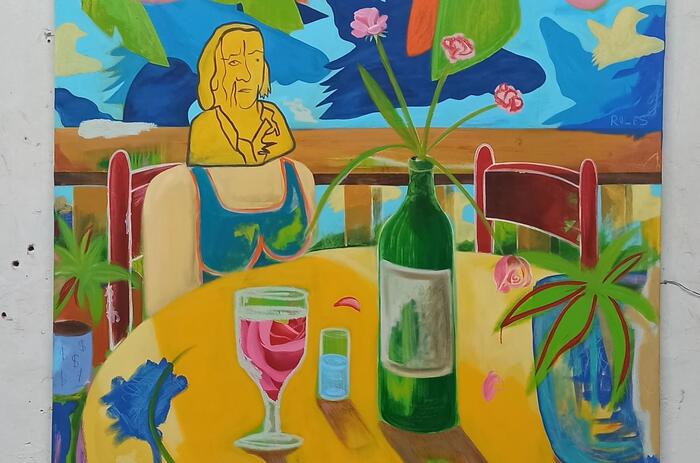
The birth of a new collective is always good news, and it is so for several reasons. Firstly, because of the existence of collective dynamics that bring together different points of view and, second, because, in a didactic way, it contributes to illustrate and understand the current cartographies of art. For the Revolú collective, formed by Andrés Meléndez (San Juan, Puerto Rico, 1996), Miguel Ángel Feba (San Juan, Puerto Rico, 1994) and Marcos Daniel Vicéns (Bayamón, Puerto Rico, 1996), their first exhibition experience is the result of an artistic residency in which, almost blindly, they have been able to build those specific ties to start from the individual and reach the group identity.
GENESIS AND BORICUA RESONANCES IN REVOLÚ
The birth of a new collective is always good news, and it is so for several reasons. Firstly, because of the existence of collective dynamics that bring together different points of view and, second, because, in a didactic way, it contributes to illustrate and understand the current cartographies of art. For the Revolú collective, formed by Andrés Meléndez (San Juan, Puerto Rico, 1996), Miguel Ángel Feba (San Juan, Puerto Rico, 1994) and Marcos Daniel Vicéns (Bayamón, Puerto Rico, 1996), their first exhibition experience is the result of an artistic residency in which, almost blindly, they have been able to build those specific ties to start from the individual and reach the group identity.
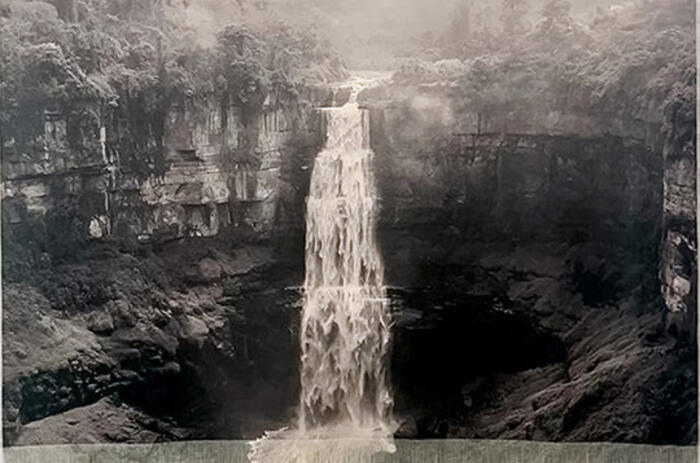
By Álvaro de Benito
The Madrid branch of La Cometa gallery presents during July the work of eight of its Ibero-American artists in a group show that delves into different languages and techniques, from ceramics to painting, and also includes dialogues with architecture and other productions. Three of those represented come from Spain, while of the five American representatives, four are Colombian and one is Cuban, which brings a representative vision of the gallery's artistic proposal closer to the spectator.
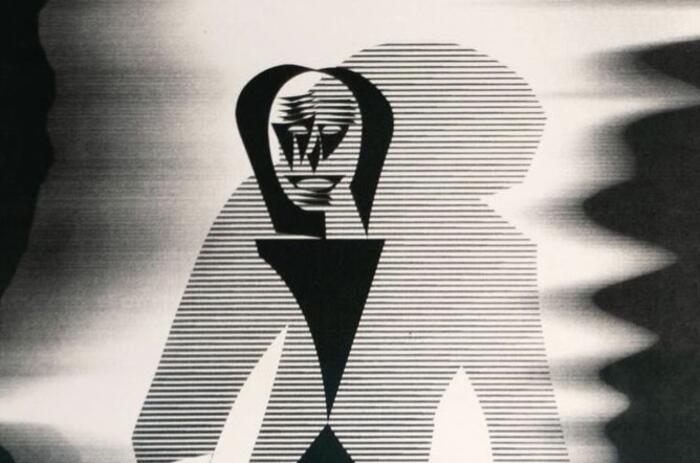
The Mexican Cultural Institute in Spain hosts the group exhibition En el interior del cielo, a show that gathers some of the most prestigious Mexican artists from the collection of Lorena Pérez-Jácome and Javier Lumbreras.
COMMUNITY AND COLLECTION AT THE CULTURAL INSTITUTE OF MEXICO
The Mexican Cultural Institute in Spain hosts the group exhibition En el interior del cielo, a show that gathers some of the most prestigious Mexican artists from the collection of Lorena Pérez-Jácome and Javier Lumbreras.
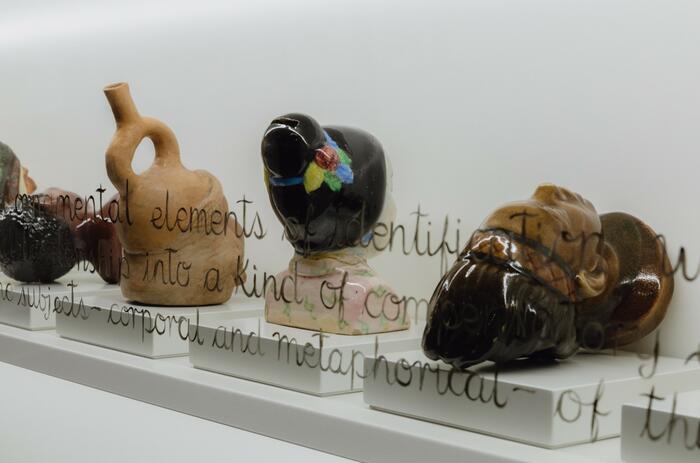
Spanish-Peruvian artist Sandra Gamarra Heshiki represents Spain at the Venice Biennale. It is the first time in 60 editions that an artist not born in Spain does so. Her project Pinacoteca migrante (Migrant gallery), questions colonial narratives and historical modes of representation.
PINACOTECA MIGRANTE: SPAIN AT THE VENICE BIENNALE
Spanish-Peruvian artist Sandra Gamarra Heshiki represents Spain at the Venice Biennale. It is the first time in 60 editions that an artist not born in Spain does so. Her project Pinacoteca migrante (Migrant gallery), questions colonial narratives and historical modes of representation.
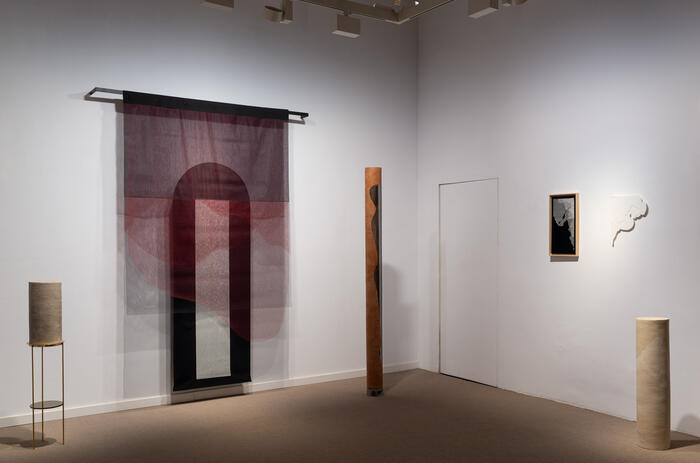
The proposal of Julia Aurora Guzmán (Santo Domingo, Dominican Republic, 1993) navigates between different techniques, addressing sculpture, textile, photography or performance and is posed as the result of the vital action itself. Her works decipher and highlight the natural cycles of life, the beginning with birth and the end with death, without forgetting the present as transience.
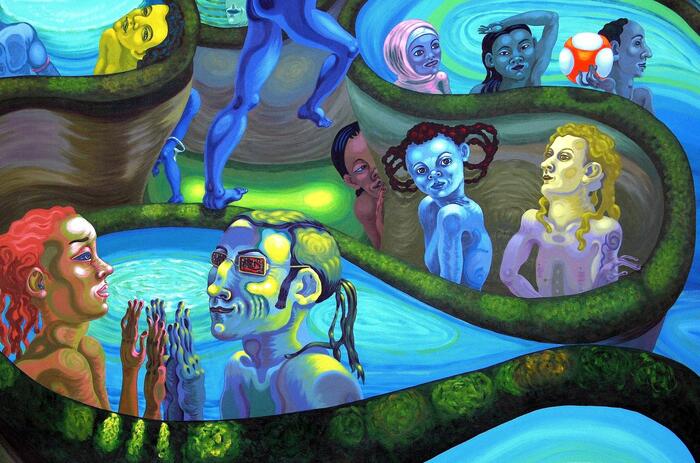
The Museum of Contemporary Art of the Americas presented the exhibition Women Who I Could’ve Been, featuring the latest work of renowned artist Ana Albertina Delgado.
THE MYSTERY OF LIFE IN ANA ALBERTINA DELGADO’S WORK
The Museum of Contemporary Art of the Americas presented the exhibition Women Who I Could’ve Been, featuring the latest work of renowned artist Ana Albertina Delgado.
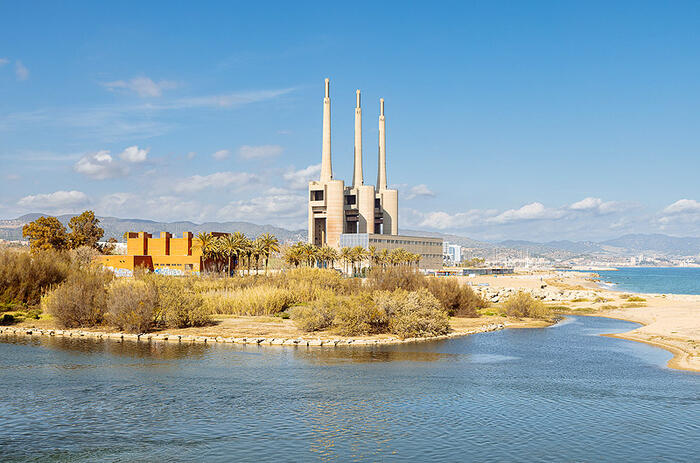
Manifesta, the European nomadic biennial, as it is defined, returns to Spain after past editions in San Sebastian (2004) and Murcia (2010) and will hold its 15th edition in the Metropolitan Area of Barcelona from September 8 to November 24. The multidisciplinary program of actions and exhibitions will be developed around the concept of place and time, focusing, through the exhibition venues chosen in the twelve participating municipalities, on the past, present and future of this region.
THE METROPOLITAN AREA OF BARCELONA HOSTS MANIFESTA 15
Manifesta, the European nomadic biennial, as it is defined, returns to Spain after past editions in San Sebastian (2004) and Murcia (2010) and will hold its 15th edition in the Metropolitan Area of Barcelona from September 8 to November 24. The multidisciplinary program of actions and exhibitions will be developed around the concept of place and time, focusing, through the exhibition venues chosen in the twelve participating municipalities, on the past, present and future of this region.
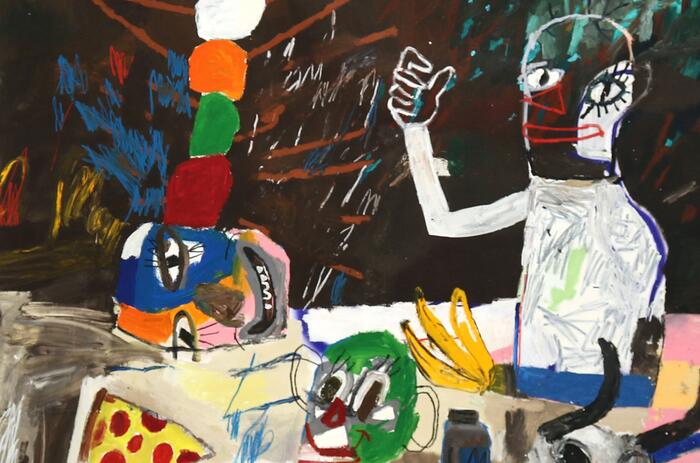
The powerful painting of Starsky Brines (Caracas, Venezuela, 1977) has in his most recent production the consolidation of one of the most intense expressions of the Latin American panorama. Collected under the accurate epigraph of Paisajes imposibles (Impossible Landscapes), the exhibition invites the spectator to let himself be impacted and submerged in a world as unreal and dreamlike as it is sometimes grotesque. These adjectives, more typical of the symptomatology of the society that underlies each of the Venezuelan's pictorial interpretations, seem to originate in the different angles that converge in Brines' universe.
HYBRID IDENTITY AND SOCIETY IN STARSKY BRINES
The powerful painting of Starsky Brines (Caracas, Venezuela, 1977) has in his most recent production the consolidation of one of the most intense expressions of the Latin American panorama. Collected under the accurate epigraph of Paisajes imposibles (Impossible Landscapes), the exhibition invites the spectator to let himself be impacted and submerged in a world as unreal and dreamlike as it is sometimes grotesque. These adjectives, more typical of the symptomatology of the society that underlies each of the Venezuelan's pictorial interpretations, seem to originate in the different angles that converge in Brines' universe.
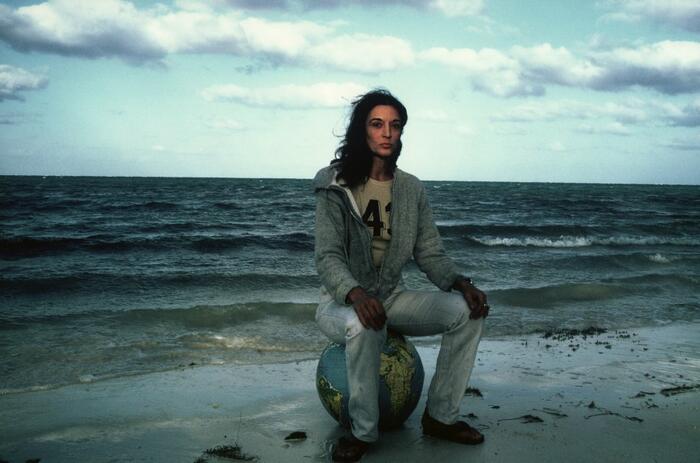
Marisol: a retrospective is an itinerant exhibition on view at the Buffalo AKG Art Museum, featuring the collection of artworks Marisol kept in her personal possession and left to the museum.
MARISOL – A RETROSPECTIVE
Marisol: a retrospective is an itinerant exhibition on view at the Buffalo AKG Art Museum, featuring the collection of artworks Marisol kept in her personal possession and left to the museum.
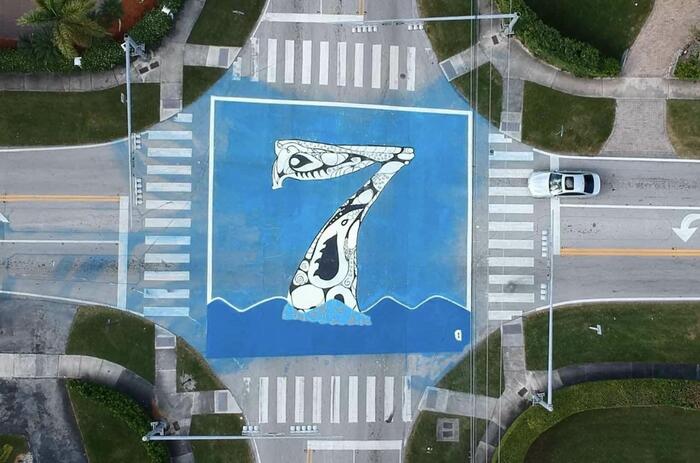
Cultural Programs of the National Academy of Sciences announces Xavier Cortada: Climate Science Art a solo exhibition at Washington, D.C. featuring Miami-based artist Xavier Cortada's climate change-focused artwork from Miami-Dade County, Florida, and the North and South Poles, spanning from 2007 to the present.
XAVIER CORTADA: CLIMATE SCIENCE ART
Cultural Programs of the National Academy of Sciences announces Xavier Cortada: Climate Science Art a solo exhibition at Washington, D.C. featuring Miami-based artist Xavier Cortada's climate change-focused artwork from Miami-Dade County, Florida, and the North and South Poles, spanning from 2007 to the present.
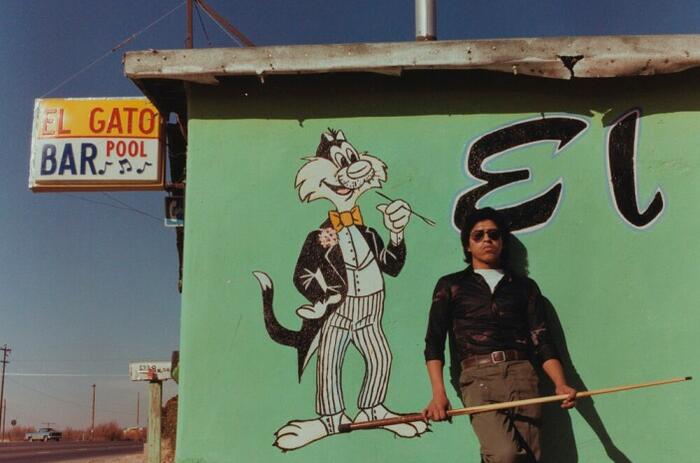
The Center for Creative Photography presents Louis Carlos Bernal: Retrospectiva, a landmark survey of one of the most significant American photographers of the twentieth century.
LOUIS CARLOS BERNAL’S RETROSPECTIVE AT THE CENTER FOR CREATIVE PHOTOGRAPHY
The Center for Creative Photography presents Louis Carlos Bernal: Retrospectiva, a landmark survey of one of the most significant American photographers of the twentieth century.

Concrete Wounds/Herida concreta is the exhibition that the Canary Islands' Centro Atlántico de Arte Moderno (CAAM) is dedicating to Karlo Andrei Ibarra (San Juan, Puerto Rico, 1982), one of the most promising and internationally renowned names of the Puerto Rican art scene.
THE POLITICAL AND SOCIAL MEANINGS OF KARLO ANDREI IBARRA AT CAAM
Concrete Wounds/Herida concreta is the exhibition that the Canary Islands' Centro Atlántico de Arte Moderno (CAAM) is dedicating to Karlo Andrei Ibarra (San Juan, Puerto Rico, 1982), one of the most promising and internationally renowned names of the Puerto Rican art scene.

The birth of a new collective is always good news, and it is so for several reasons. Firstly, because of the existence of collective dynamics that bring together different points of view and, second, because, in a didactic way, it contributes to illustrate and understand the current cartographies of art. For the Revolú collective, formed by Andrés Meléndez (San Juan, Puerto Rico, 1996), Miguel Ángel Feba (San Juan, Puerto Rico, 1994) and Marcos Daniel Vicéns (Bayamón, Puerto Rico, 1996), their first exhibition experience is the result of an artistic residency in which, almost blindly, they have been able to build those specific ties to start from the individual and reach the group identity.
GENESIS AND BORICUA RESONANCES IN REVOLÚ
The birth of a new collective is always good news, and it is so for several reasons. Firstly, because of the existence of collective dynamics that bring together different points of view and, second, because, in a didactic way, it contributes to illustrate and understand the current cartographies of art. For the Revolú collective, formed by Andrés Meléndez (San Juan, Puerto Rico, 1996), Miguel Ángel Feba (San Juan, Puerto Rico, 1994) and Marcos Daniel Vicéns (Bayamón, Puerto Rico, 1996), their first exhibition experience is the result of an artistic residency in which, almost blindly, they have been able to build those specific ties to start from the individual and reach the group identity.

By Álvaro de Benito
The Madrid branch of La Cometa gallery presents during July the work of eight of its Ibero-American artists in a group show that delves into different languages and techniques, from ceramics to painting, and also includes dialogues with architecture and other productions. Three of those represented come from Spain, while of the five American representatives, four are Colombian and one is Cuban, which brings a representative vision of the gallery's artistic proposal closer to the spectator.

The Mexican Cultural Institute in Spain hosts the group exhibition En el interior del cielo, a show that gathers some of the most prestigious Mexican artists from the collection of Lorena Pérez-Jácome and Javier Lumbreras.
COMMUNITY AND COLLECTION AT THE CULTURAL INSTITUTE OF MEXICO
The Mexican Cultural Institute in Spain hosts the group exhibition En el interior del cielo, a show that gathers some of the most prestigious Mexican artists from the collection of Lorena Pérez-Jácome and Javier Lumbreras.

Spanish-Peruvian artist Sandra Gamarra Heshiki represents Spain at the Venice Biennale. It is the first time in 60 editions that an artist not born in Spain does so. Her project Pinacoteca migrante (Migrant gallery), questions colonial narratives and historical modes of representation.
PINACOTECA MIGRANTE: SPAIN AT THE VENICE BIENNALE
Spanish-Peruvian artist Sandra Gamarra Heshiki represents Spain at the Venice Biennale. It is the first time in 60 editions that an artist not born in Spain does so. Her project Pinacoteca migrante (Migrant gallery), questions colonial narratives and historical modes of representation.

The proposal of Julia Aurora Guzmán (Santo Domingo, Dominican Republic, 1993) navigates between different techniques, addressing sculpture, textile, photography or performance and is posed as the result of the vital action itself. Her works decipher and highlight the natural cycles of life, the beginning with birth and the end with death, without forgetting the present as transience.

The Museum of Contemporary Art of the Americas presented the exhibition Women Who I Could’ve Been, featuring the latest work of renowned artist Ana Albertina Delgado.
THE MYSTERY OF LIFE IN ANA ALBERTINA DELGADO’S WORK
The Museum of Contemporary Art of the Americas presented the exhibition Women Who I Could’ve Been, featuring the latest work of renowned artist Ana Albertina Delgado.

Manifesta, the European nomadic biennial, as it is defined, returns to Spain after past editions in San Sebastian (2004) and Murcia (2010) and will hold its 15th edition in the Metropolitan Area of Barcelona from September 8 to November 24. The multidisciplinary program of actions and exhibitions will be developed around the concept of place and time, focusing, through the exhibition venues chosen in the twelve participating municipalities, on the past, present and future of this region.
THE METROPOLITAN AREA OF BARCELONA HOSTS MANIFESTA 15
Manifesta, the European nomadic biennial, as it is defined, returns to Spain after past editions in San Sebastian (2004) and Murcia (2010) and will hold its 15th edition in the Metropolitan Area of Barcelona from September 8 to November 24. The multidisciplinary program of actions and exhibitions will be developed around the concept of place and time, focusing, through the exhibition venues chosen in the twelve participating municipalities, on the past, present and future of this region.

The powerful painting of Starsky Brines (Caracas, Venezuela, 1977) has in his most recent production the consolidation of one of the most intense expressions of the Latin American panorama. Collected under the accurate epigraph of Paisajes imposibles (Impossible Landscapes), the exhibition invites the spectator to let himself be impacted and submerged in a world as unreal and dreamlike as it is sometimes grotesque. These adjectives, more typical of the symptomatology of the society that underlies each of the Venezuelan's pictorial interpretations, seem to originate in the different angles that converge in Brines' universe.
HYBRID IDENTITY AND SOCIETY IN STARSKY BRINES
The powerful painting of Starsky Brines (Caracas, Venezuela, 1977) has in his most recent production the consolidation of one of the most intense expressions of the Latin American panorama. Collected under the accurate epigraph of Paisajes imposibles (Impossible Landscapes), the exhibition invites the spectator to let himself be impacted and submerged in a world as unreal and dreamlike as it is sometimes grotesque. These adjectives, more typical of the symptomatology of the society that underlies each of the Venezuelan's pictorial interpretations, seem to originate in the different angles that converge in Brines' universe.

Marisol: a retrospective is an itinerant exhibition on view at the Buffalo AKG Art Museum, featuring the collection of artworks Marisol kept in her personal possession and left to the museum.
MARISOL – A RETROSPECTIVE
Marisol: a retrospective is an itinerant exhibition on view at the Buffalo AKG Art Museum, featuring the collection of artworks Marisol kept in her personal possession and left to the museum.

Cultural Programs of the National Academy of Sciences announces Xavier Cortada: Climate Science Art a solo exhibition at Washington, D.C. featuring Miami-based artist Xavier Cortada's climate change-focused artwork from Miami-Dade County, Florida, and the North and South Poles, spanning from 2007 to the present.
XAVIER CORTADA: CLIMATE SCIENCE ART
Cultural Programs of the National Academy of Sciences announces Xavier Cortada: Climate Science Art a solo exhibition at Washington, D.C. featuring Miami-based artist Xavier Cortada's climate change-focused artwork from Miami-Dade County, Florida, and the North and South Poles, spanning from 2007 to the present.

The Center for Creative Photography presents Louis Carlos Bernal: Retrospectiva, a landmark survey of one of the most significant American photographers of the twentieth century.
LOUIS CARLOS BERNAL’S RETROSPECTIVE AT THE CENTER FOR CREATIVE PHOTOGRAPHY
The Center for Creative Photography presents Louis Carlos Bernal: Retrospectiva, a landmark survey of one of the most significant American photographers of the twentieth century.

Concrete Wounds/Herida concreta is the exhibition that the Canary Islands' Centro Atlántico de Arte Moderno (CAAM) is dedicating to Karlo Andrei Ibarra (San Juan, Puerto Rico, 1982), one of the most promising and internationally renowned names of the Puerto Rican art scene.
THE POLITICAL AND SOCIAL MEANINGS OF KARLO ANDREI IBARRA AT CAAM
Concrete Wounds/Herida concreta is the exhibition that the Canary Islands' Centro Atlántico de Arte Moderno (CAAM) is dedicating to Karlo Andrei Ibarra (San Juan, Puerto Rico, 1982), one of the most promising and internationally renowned names of the Puerto Rican art scene.

The birth of a new collective is always good news, and it is so for several reasons. Firstly, because of the existence of collective dynamics that bring together different points of view and, second, because, in a didactic way, it contributes to illustrate and understand the current cartographies of art. For the Revolú collective, formed by Andrés Meléndez (San Juan, Puerto Rico, 1996), Miguel Ángel Feba (San Juan, Puerto Rico, 1994) and Marcos Daniel Vicéns (Bayamón, Puerto Rico, 1996), their first exhibition experience is the result of an artistic residency in which, almost blindly, they have been able to build those specific ties to start from the individual and reach the group identity.
GENESIS AND BORICUA RESONANCES IN REVOLÚ
The birth of a new collective is always good news, and it is so for several reasons. Firstly, because of the existence of collective dynamics that bring together different points of view and, second, because, in a didactic way, it contributes to illustrate and understand the current cartographies of art. For the Revolú collective, formed by Andrés Meléndez (San Juan, Puerto Rico, 1996), Miguel Ángel Feba (San Juan, Puerto Rico, 1994) and Marcos Daniel Vicéns (Bayamón, Puerto Rico, 1996), their first exhibition experience is the result of an artistic residency in which, almost blindly, they have been able to build those specific ties to start from the individual and reach the group identity.

By Álvaro de Benito
The Madrid branch of La Cometa gallery presents during July the work of eight of its Ibero-American artists in a group show that delves into different languages and techniques, from ceramics to painting, and also includes dialogues with architecture and other productions. Three of those represented come from Spain, while of the five American representatives, four are Colombian and one is Cuban, which brings a representative vision of the gallery's artistic proposal closer to the spectator.

The Mexican Cultural Institute in Spain hosts the group exhibition En el interior del cielo, a show that gathers some of the most prestigious Mexican artists from the collection of Lorena Pérez-Jácome and Javier Lumbreras.
COMMUNITY AND COLLECTION AT THE CULTURAL INSTITUTE OF MEXICO
The Mexican Cultural Institute in Spain hosts the group exhibition En el interior del cielo, a show that gathers some of the most prestigious Mexican artists from the collection of Lorena Pérez-Jácome and Javier Lumbreras.

Spanish-Peruvian artist Sandra Gamarra Heshiki represents Spain at the Venice Biennale. It is the first time in 60 editions that an artist not born in Spain does so. Her project Pinacoteca migrante (Migrant gallery), questions colonial narratives and historical modes of representation.
PINACOTECA MIGRANTE: SPAIN AT THE VENICE BIENNALE
Spanish-Peruvian artist Sandra Gamarra Heshiki represents Spain at the Venice Biennale. It is the first time in 60 editions that an artist not born in Spain does so. Her project Pinacoteca migrante (Migrant gallery), questions colonial narratives and historical modes of representation.

The proposal of Julia Aurora Guzmán (Santo Domingo, Dominican Republic, 1993) navigates between different techniques, addressing sculpture, textile, photography or performance and is posed as the result of the vital action itself. Her works decipher and highlight the natural cycles of life, the beginning with birth and the end with death, without forgetting the present as transience.

The Museum of Contemporary Art of the Americas presented the exhibition Women Who I Could’ve Been, featuring the latest work of renowned artist Ana Albertina Delgado.
THE MYSTERY OF LIFE IN ANA ALBERTINA DELGADO’S WORK
The Museum of Contemporary Art of the Americas presented the exhibition Women Who I Could’ve Been, featuring the latest work of renowned artist Ana Albertina Delgado.

Manifesta, the European nomadic biennial, as it is defined, returns to Spain after past editions in San Sebastian (2004) and Murcia (2010) and will hold its 15th edition in the Metropolitan Area of Barcelona from September 8 to November 24. The multidisciplinary program of actions and exhibitions will be developed around the concept of place and time, focusing, through the exhibition venues chosen in the twelve participating municipalities, on the past, present and future of this region.
THE METROPOLITAN AREA OF BARCELONA HOSTS MANIFESTA 15
Manifesta, the European nomadic biennial, as it is defined, returns to Spain after past editions in San Sebastian (2004) and Murcia (2010) and will hold its 15th edition in the Metropolitan Area of Barcelona from September 8 to November 24. The multidisciplinary program of actions and exhibitions will be developed around the concept of place and time, focusing, through the exhibition venues chosen in the twelve participating municipalities, on the past, present and future of this region.

The powerful painting of Starsky Brines (Caracas, Venezuela, 1977) has in his most recent production the consolidation of one of the most intense expressions of the Latin American panorama. Collected under the accurate epigraph of Paisajes imposibles (Impossible Landscapes), the exhibition invites the spectator to let himself be impacted and submerged in a world as unreal and dreamlike as it is sometimes grotesque. These adjectives, more typical of the symptomatology of the society that underlies each of the Venezuelan's pictorial interpretations, seem to originate in the different angles that converge in Brines' universe.
HYBRID IDENTITY AND SOCIETY IN STARSKY BRINES
The powerful painting of Starsky Brines (Caracas, Venezuela, 1977) has in his most recent production the consolidation of one of the most intense expressions of the Latin American panorama. Collected under the accurate epigraph of Paisajes imposibles (Impossible Landscapes), the exhibition invites the spectator to let himself be impacted and submerged in a world as unreal and dreamlike as it is sometimes grotesque. These adjectives, more typical of the symptomatology of the society that underlies each of the Venezuelan's pictorial interpretations, seem to originate in the different angles that converge in Brines' universe.

Marisol: a retrospective is an itinerant exhibition on view at the Buffalo AKG Art Museum, featuring the collection of artworks Marisol kept in her personal possession and left to the museum.
MARISOL – A RETROSPECTIVE
Marisol: a retrospective is an itinerant exhibition on view at the Buffalo AKG Art Museum, featuring the collection of artworks Marisol kept in her personal possession and left to the museum.

Cultural Programs of the National Academy of Sciences announces Xavier Cortada: Climate Science Art a solo exhibition at Washington, D.C. featuring Miami-based artist Xavier Cortada's climate change-focused artwork from Miami-Dade County, Florida, and the North and South Poles, spanning from 2007 to the present.
XAVIER CORTADA: CLIMATE SCIENCE ART
Cultural Programs of the National Academy of Sciences announces Xavier Cortada: Climate Science Art a solo exhibition at Washington, D.C. featuring Miami-based artist Xavier Cortada's climate change-focused artwork from Miami-Dade County, Florida, and the North and South Poles, spanning from 2007 to the present.

The Center for Creative Photography presents Louis Carlos Bernal: Retrospectiva, a landmark survey of one of the most significant American photographers of the twentieth century.
LOUIS CARLOS BERNAL’S RETROSPECTIVE AT THE CENTER FOR CREATIVE PHOTOGRAPHY
The Center for Creative Photography presents Louis Carlos Bernal: Retrospectiva, a landmark survey of one of the most significant American photographers of the twentieth century.

Concrete Wounds/Herida concreta is the exhibition that the Canary Islands' Centro Atlántico de Arte Moderno (CAAM) is dedicating to Karlo Andrei Ibarra (San Juan, Puerto Rico, 1982), one of the most promising and internationally renowned names of the Puerto Rican art scene.
THE POLITICAL AND SOCIAL MEANINGS OF KARLO ANDREI IBARRA AT CAAM
Concrete Wounds/Herida concreta is the exhibition that the Canary Islands' Centro Atlántico de Arte Moderno (CAAM) is dedicating to Karlo Andrei Ibarra (San Juan, Puerto Rico, 1982), one of the most promising and internationally renowned names of the Puerto Rican art scene.

The birth of a new collective is always good news, and it is so for several reasons. Firstly, because of the existence of collective dynamics that bring together different points of view and, second, because, in a didactic way, it contributes to illustrate and understand the current cartographies of art. For the Revolú collective, formed by Andrés Meléndez (San Juan, Puerto Rico, 1996), Miguel Ángel Feba (San Juan, Puerto Rico, 1994) and Marcos Daniel Vicéns (Bayamón, Puerto Rico, 1996), their first exhibition experience is the result of an artistic residency in which, almost blindly, they have been able to build those specific ties to start from the individual and reach the group identity.
GENESIS AND BORICUA RESONANCES IN REVOLÚ
The birth of a new collective is always good news, and it is so for several reasons. Firstly, because of the existence of collective dynamics that bring together different points of view and, second, because, in a didactic way, it contributes to illustrate and understand the current cartographies of art. For the Revolú collective, formed by Andrés Meléndez (San Juan, Puerto Rico, 1996), Miguel Ángel Feba (San Juan, Puerto Rico, 1994) and Marcos Daniel Vicéns (Bayamón, Puerto Rico, 1996), their first exhibition experience is the result of an artistic residency in which, almost blindly, they have been able to build those specific ties to start from the individual and reach the group identity.

By Álvaro de Benito
The Madrid branch of La Cometa gallery presents during July the work of eight of its Ibero-American artists in a group show that delves into different languages and techniques, from ceramics to painting, and also includes dialogues with architecture and other productions. Three of those represented come from Spain, while of the five American representatives, four are Colombian and one is Cuban, which brings a representative vision of the gallery's artistic proposal closer to the spectator.

The Mexican Cultural Institute in Spain hosts the group exhibition En el interior del cielo, a show that gathers some of the most prestigious Mexican artists from the collection of Lorena Pérez-Jácome and Javier Lumbreras.
COMMUNITY AND COLLECTION AT THE CULTURAL INSTITUTE OF MEXICO
The Mexican Cultural Institute in Spain hosts the group exhibition En el interior del cielo, a show that gathers some of the most prestigious Mexican artists from the collection of Lorena Pérez-Jácome and Javier Lumbreras.

Spanish-Peruvian artist Sandra Gamarra Heshiki represents Spain at the Venice Biennale. It is the first time in 60 editions that an artist not born in Spain does so. Her project Pinacoteca migrante (Migrant gallery), questions colonial narratives and historical modes of representation.
PINACOTECA MIGRANTE: SPAIN AT THE VENICE BIENNALE
Spanish-Peruvian artist Sandra Gamarra Heshiki represents Spain at the Venice Biennale. It is the first time in 60 editions that an artist not born in Spain does so. Her project Pinacoteca migrante (Migrant gallery), questions colonial narratives and historical modes of representation.

The proposal of Julia Aurora Guzmán (Santo Domingo, Dominican Republic, 1993) navigates between different techniques, addressing sculpture, textile, photography or performance and is posed as the result of the vital action itself. Her works decipher and highlight the natural cycles of life, the beginning with birth and the end with death, without forgetting the present as transience.

The Museum of Contemporary Art of the Americas presented the exhibition Women Who I Could’ve Been, featuring the latest work of renowned artist Ana Albertina Delgado.
THE MYSTERY OF LIFE IN ANA ALBERTINA DELGADO’S WORK
The Museum of Contemporary Art of the Americas presented the exhibition Women Who I Could’ve Been, featuring the latest work of renowned artist Ana Albertina Delgado.

Manifesta, the European nomadic biennial, as it is defined, returns to Spain after past editions in San Sebastian (2004) and Murcia (2010) and will hold its 15th edition in the Metropolitan Area of Barcelona from September 8 to November 24. The multidisciplinary program of actions and exhibitions will be developed around the concept of place and time, focusing, through the exhibition venues chosen in the twelve participating municipalities, on the past, present and future of this region.
THE METROPOLITAN AREA OF BARCELONA HOSTS MANIFESTA 15
Manifesta, the European nomadic biennial, as it is defined, returns to Spain after past editions in San Sebastian (2004) and Murcia (2010) and will hold its 15th edition in the Metropolitan Area of Barcelona from September 8 to November 24. The multidisciplinary program of actions and exhibitions will be developed around the concept of place and time, focusing, through the exhibition venues chosen in the twelve participating municipalities, on the past, present and future of this region.

The powerful painting of Starsky Brines (Caracas, Venezuela, 1977) has in his most recent production the consolidation of one of the most intense expressions of the Latin American panorama. Collected under the accurate epigraph of Paisajes imposibles (Impossible Landscapes), the exhibition invites the spectator to let himself be impacted and submerged in a world as unreal and dreamlike as it is sometimes grotesque. These adjectives, more typical of the symptomatology of the society that underlies each of the Venezuelan's pictorial interpretations, seem to originate in the different angles that converge in Brines' universe.
HYBRID IDENTITY AND SOCIETY IN STARSKY BRINES
The powerful painting of Starsky Brines (Caracas, Venezuela, 1977) has in his most recent production the consolidation of one of the most intense expressions of the Latin American panorama. Collected under the accurate epigraph of Paisajes imposibles (Impossible Landscapes), the exhibition invites the spectator to let himself be impacted and submerged in a world as unreal and dreamlike as it is sometimes grotesque. These adjectives, more typical of the symptomatology of the society that underlies each of the Venezuelan's pictorial interpretations, seem to originate in the different angles that converge in Brines' universe.

Marisol: a retrospective is an itinerant exhibition on view at the Buffalo AKG Art Museum, featuring the collection of artworks Marisol kept in her personal possession and left to the museum.
MARISOL – A RETROSPECTIVE
Marisol: a retrospective is an itinerant exhibition on view at the Buffalo AKG Art Museum, featuring the collection of artworks Marisol kept in her personal possession and left to the museum.

Cultural Programs of the National Academy of Sciences announces Xavier Cortada: Climate Science Art a solo exhibition at Washington, D.C. featuring Miami-based artist Xavier Cortada's climate change-focused artwork from Miami-Dade County, Florida, and the North and South Poles, spanning from 2007 to the present.
XAVIER CORTADA: CLIMATE SCIENCE ART
Cultural Programs of the National Academy of Sciences announces Xavier Cortada: Climate Science Art a solo exhibition at Washington, D.C. featuring Miami-based artist Xavier Cortada's climate change-focused artwork from Miami-Dade County, Florida, and the North and South Poles, spanning from 2007 to the present.

The Center for Creative Photography presents Louis Carlos Bernal: Retrospectiva, a landmark survey of one of the most significant American photographers of the twentieth century.
LOUIS CARLOS BERNAL’S RETROSPECTIVE AT THE CENTER FOR CREATIVE PHOTOGRAPHY
The Center for Creative Photography presents Louis Carlos Bernal: Retrospectiva, a landmark survey of one of the most significant American photographers of the twentieth century.

Concrete Wounds/Herida concreta is the exhibition that the Canary Islands' Centro Atlántico de Arte Moderno (CAAM) is dedicating to Karlo Andrei Ibarra (San Juan, Puerto Rico, 1982), one of the most promising and internationally renowned names of the Puerto Rican art scene.
THE POLITICAL AND SOCIAL MEANINGS OF KARLO ANDREI IBARRA AT CAAM
Concrete Wounds/Herida concreta is the exhibition that the Canary Islands' Centro Atlántico de Arte Moderno (CAAM) is dedicating to Karlo Andrei Ibarra (San Juan, Puerto Rico, 1982), one of the most promising and internationally renowned names of the Puerto Rican art scene.

The birth of a new collective is always good news, and it is so for several reasons. Firstly, because of the existence of collective dynamics that bring together different points of view and, second, because, in a didactic way, it contributes to illustrate and understand the current cartographies of art. For the Revolú collective, formed by Andrés Meléndez (San Juan, Puerto Rico, 1996), Miguel Ángel Feba (San Juan, Puerto Rico, 1994) and Marcos Daniel Vicéns (Bayamón, Puerto Rico, 1996), their first exhibition experience is the result of an artistic residency in which, almost blindly, they have been able to build those specific ties to start from the individual and reach the group identity.
GENESIS AND BORICUA RESONANCES IN REVOLÚ
The birth of a new collective is always good news, and it is so for several reasons. Firstly, because of the existence of collective dynamics that bring together different points of view and, second, because, in a didactic way, it contributes to illustrate and understand the current cartographies of art. For the Revolú collective, formed by Andrés Meléndez (San Juan, Puerto Rico, 1996), Miguel Ángel Feba (San Juan, Puerto Rico, 1994) and Marcos Daniel Vicéns (Bayamón, Puerto Rico, 1996), their first exhibition experience is the result of an artistic residency in which, almost blindly, they have been able to build those specific ties to start from the individual and reach the group identity.

By Álvaro de Benito
The Madrid branch of La Cometa gallery presents during July the work of eight of its Ibero-American artists in a group show that delves into different languages and techniques, from ceramics to painting, and also includes dialogues with architecture and other productions. Three of those represented come from Spain, while of the five American representatives, four are Colombian and one is Cuban, which brings a representative vision of the gallery's artistic proposal closer to the spectator.

The Mexican Cultural Institute in Spain hosts the group exhibition En el interior del cielo, a show that gathers some of the most prestigious Mexican artists from the collection of Lorena Pérez-Jácome and Javier Lumbreras.
COMMUNITY AND COLLECTION AT THE CULTURAL INSTITUTE OF MEXICO
The Mexican Cultural Institute in Spain hosts the group exhibition En el interior del cielo, a show that gathers some of the most prestigious Mexican artists from the collection of Lorena Pérez-Jácome and Javier Lumbreras.

Spanish-Peruvian artist Sandra Gamarra Heshiki represents Spain at the Venice Biennale. It is the first time in 60 editions that an artist not born in Spain does so. Her project Pinacoteca migrante (Migrant gallery), questions colonial narratives and historical modes of representation.
PINACOTECA MIGRANTE: SPAIN AT THE VENICE BIENNALE
Spanish-Peruvian artist Sandra Gamarra Heshiki represents Spain at the Venice Biennale. It is the first time in 60 editions that an artist not born in Spain does so. Her project Pinacoteca migrante (Migrant gallery), questions colonial narratives and historical modes of representation.

The proposal of Julia Aurora Guzmán (Santo Domingo, Dominican Republic, 1993) navigates between different techniques, addressing sculpture, textile, photography or performance and is posed as the result of the vital action itself. Her works decipher and highlight the natural cycles of life, the beginning with birth and the end with death, without forgetting the present as transience.

The Museum of Contemporary Art of the Americas presented the exhibition Women Who I Could’ve Been, featuring the latest work of renowned artist Ana Albertina Delgado.
THE MYSTERY OF LIFE IN ANA ALBERTINA DELGADO’S WORK
The Museum of Contemporary Art of the Americas presented the exhibition Women Who I Could’ve Been, featuring the latest work of renowned artist Ana Albertina Delgado.

Manifesta, the European nomadic biennial, as it is defined, returns to Spain after past editions in San Sebastian (2004) and Murcia (2010) and will hold its 15th edition in the Metropolitan Area of Barcelona from September 8 to November 24. The multidisciplinary program of actions and exhibitions will be developed around the concept of place and time, focusing, through the exhibition venues chosen in the twelve participating municipalities, on the past, present and future of this region.
THE METROPOLITAN AREA OF BARCELONA HOSTS MANIFESTA 15
Manifesta, the European nomadic biennial, as it is defined, returns to Spain after past editions in San Sebastian (2004) and Murcia (2010) and will hold its 15th edition in the Metropolitan Area of Barcelona from September 8 to November 24. The multidisciplinary program of actions and exhibitions will be developed around the concept of place and time, focusing, through the exhibition venues chosen in the twelve participating municipalities, on the past, present and future of this region.

The powerful painting of Starsky Brines (Caracas, Venezuela, 1977) has in his most recent production the consolidation of one of the most intense expressions of the Latin American panorama. Collected under the accurate epigraph of Paisajes imposibles (Impossible Landscapes), the exhibition invites the spectator to let himself be impacted and submerged in a world as unreal and dreamlike as it is sometimes grotesque. These adjectives, more typical of the symptomatology of the society that underlies each of the Venezuelan's pictorial interpretations, seem to originate in the different angles that converge in Brines' universe.
HYBRID IDENTITY AND SOCIETY IN STARSKY BRINES
The powerful painting of Starsky Brines (Caracas, Venezuela, 1977) has in his most recent production the consolidation of one of the most intense expressions of the Latin American panorama. Collected under the accurate epigraph of Paisajes imposibles (Impossible Landscapes), the exhibition invites the spectator to let himself be impacted and submerged in a world as unreal and dreamlike as it is sometimes grotesque. These adjectives, more typical of the symptomatology of the society that underlies each of the Venezuelan's pictorial interpretations, seem to originate in the different angles that converge in Brines' universe.

Marisol: a retrospective is an itinerant exhibition on view at the Buffalo AKG Art Museum, featuring the collection of artworks Marisol kept in her personal possession and left to the museum.
MARISOL – A RETROSPECTIVE
Marisol: a retrospective is an itinerant exhibition on view at the Buffalo AKG Art Museum, featuring the collection of artworks Marisol kept in her personal possession and left to the museum.

Cultural Programs of the National Academy of Sciences announces Xavier Cortada: Climate Science Art a solo exhibition at Washington, D.C. featuring Miami-based artist Xavier Cortada's climate change-focused artwork from Miami-Dade County, Florida, and the North and South Poles, spanning from 2007 to the present.
XAVIER CORTADA: CLIMATE SCIENCE ART
Cultural Programs of the National Academy of Sciences announces Xavier Cortada: Climate Science Art a solo exhibition at Washington, D.C. featuring Miami-based artist Xavier Cortada's climate change-focused artwork from Miami-Dade County, Florida, and the North and South Poles, spanning from 2007 to the present.

The Center for Creative Photography presents Louis Carlos Bernal: Retrospectiva, a landmark survey of one of the most significant American photographers of the twentieth century.
LOUIS CARLOS BERNAL’S RETROSPECTIVE AT THE CENTER FOR CREATIVE PHOTOGRAPHY
The Center for Creative Photography presents Louis Carlos Bernal: Retrospectiva, a landmark survey of one of the most significant American photographers of the twentieth century.


